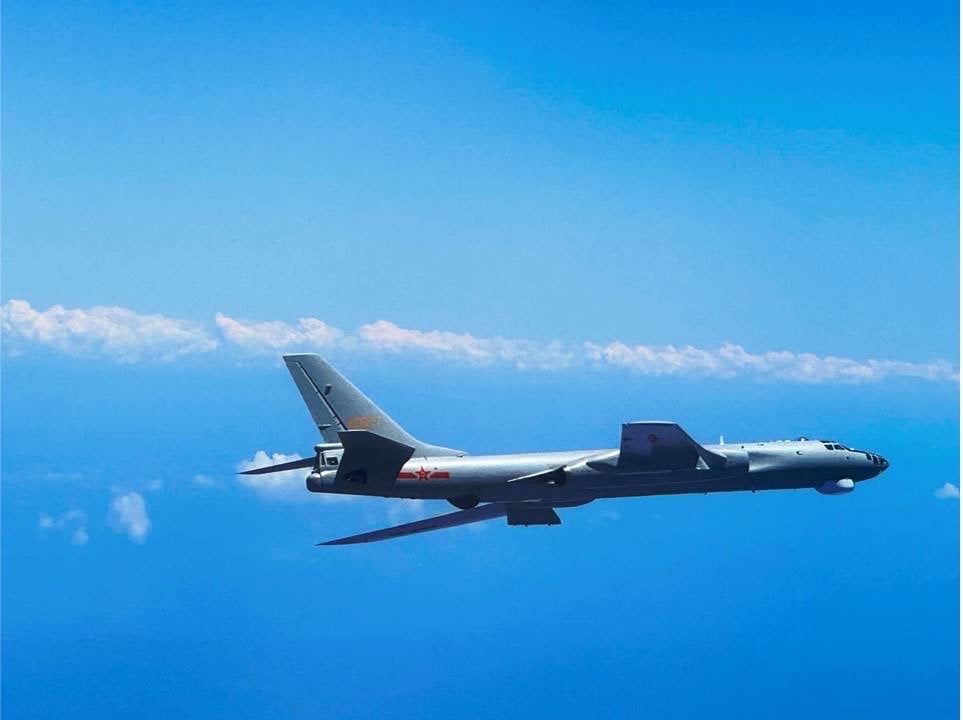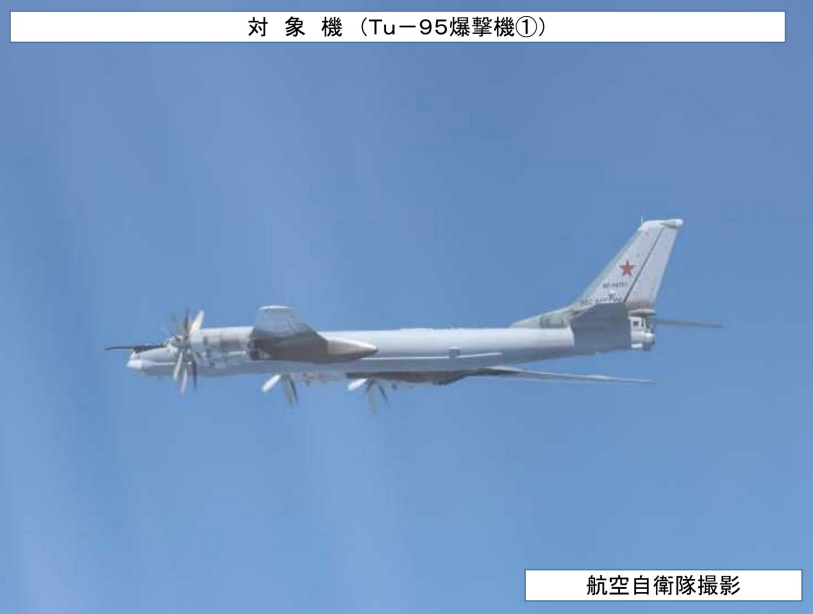
China surged 66 military aircraft near Taiwan over Wednesday and Thursday – the largest sortie for this year, according to the Taiwan Ministry of National Defense. Fifty-six aircraft crossed the median line of the Taiwan Strait and of those 36 People’s Liberation Army Navy’s drilled with the Shandong Carrier Strike Group, according to MND.
The aircraft and seven Chinese warships were seen from 6 a.m. Wednesday to 6 a.m. Thursday by the MND.
“Republic of Taiwan Armed Forces have monitored the situation and employed Combat Air Patrol aircraft, navy vessels and coastal missile systems in response to the detected activities,” reads the release, which also included undated photographs of a Chinese H-6 bomber and a J-16 fighter.
Earlier on Wednesday, in a social media post, the MND stated that from 5:20 a.m. that day, a total of 37 PLA aircraft in various types which included J-16 fighters, H-6 bombers, KJ-500 Airborne Early Warning and Control (AEW&C) aircraft and Unmanned Aerial Vehicles (UAVs) were detected. Of these, 36 crossed the median line of the Taiwan Strait and entered the south and southeast parts of Taiwan’s air defense identification zones to train with carrier CNS Shandong (17) and other Chinese warships.
On the same day in a press conference, Taiwan Defense Minister Wellington Koo stated that the MND knew that Shandong had not passed through the Bashi Channel between Mavulis Island of the Philippines and Orchid Island of Taiwan to enter the Philippine Sea from the South China Sea. The Bashi Channel is normally the route taken by PLAN ships when moving out of the South China Sea to the Philippine Sea and vice versa. Koo stated that the PLAN carrier instead sailed through the Balintang Channel, which lies further south from the Bashi Channel and subsequently headed west to the Philippine Sea.
On Thursday in a speech at Taiwan’s National Defense University President Lai Ching Te warned of China’s threat to regional stability, “Currently, the CCP’s threat to regional stability continues to rise, and its intrusion into gray areas across the Taiwan Strait and surrounding areas is also increasing day by day. These are common challenges to global democracy”, said Lai according to a release from the Taiwan President’s Office.
Japan reported on Tuesday on the presence of the Shandong CSG in the Philippine Sea with destroyer JS Akebono (DD-108) shadowing the CSG but has issued no further reports though standard practice for Japan in the case of PLAN CSGs is to issue an initial sighting report with a later report collating several days of activities release subsequently.
Also on Tuesday, the JMSDF release the findings of its accident investigation board into the mid-air collision between two of its SH-60K helicopters on Apr. 20 while conducting anti-submarine warfare training in an area 150 nautical miles east of the island of Torishima. The collision resulted in the death of all eight crewmembers on the helicopters. The board found that inadequate watchkeeping by the crews of both helicopters, a lack of proper communication between the 4th Escort Flotilla commander and the commanding officer of destroyer JS Suzunami (DD-114) and a failure to set altitude separation were contributory factors to the collision.
The report stated that helicopter No. 16 from destroyer JS Haguro (DDG-180) and helicopter No. 43 from destroyer JS Kirisame (DD-104) were both aware of each other’s presence, no evasive manoeuvres were taken until the moment of collision, with the board concluding that there was a possibility that both crews, misjudged the distance of the other helicopter due to the night time conditions, “for both aircraft, reports of visually identified targets to the captain, sharing of information among the crew, and instructions from the captain to accurately grasp the target’s movements were not sufficiently made, and the watch report procedure and response to grasping the target’s movements were insufficient,” added the report.
The report also stated that while No.16 was circling was circling clockwise while using automatic flight, there was insufficient attention against the approach of No. 43 while No. 43 also did not sufficiently monitor the flight path of No. 16.
The board also found that the 4th Escort Flotilla commander did not adequately communicate to the commanding officer of Suzunami that he had dispatched No.16, which was under his command, to search for the target while at the same time the board also stated that Suzanami’s CO also failed to adequately communicate that he had dispatched No. 43, which was under his command, to search for the same target.
The 4th Escort Flotilla Commander, who was in charge of the overall operations, did not fully grasp the overall situation that there were three helicopters currently in flight at the same time, the board found. Suzunami’s CO had helicopters No. 13 and No. 43 under his command airborne and added that the 4th Escort Flotilla Commander did not supervise the cooperation of No. 16 and No. 43 and also did not take any actions such as ordering altitude separation.
66 PLA aircraft and 7 PLAN vessels operating around Taiwan were detected up until 6 a.m. (UTC+8) today. 56 of the aircraft crossed the median line and entered Taiwan’s northern, southwestern and southeasten ADIZ. pic.twitter.com/UnNyjvbcDI
— 國防部 Ministry of National Defense, R.O.C. 🇹🇼 (@MoNDefense) July 11, 2024
The board’s final contributory finding blamed the Escort Flotilla commander, Suzunami’s CO and both helicopters for not setting altitude separation despite being aware that that the two helicopters were searching for the same target.
The board recommendation was that to prevent future incidents occurring, visual lookout must be strictly carried out in accordance with JMSDF manuals on such but it also noted that as visual surveillance has its limitations, it is necessary to fully utilize available resources to accurately grasp the position and movements of other aircraft and share information both inside and outside the aircraft. It also stated that communications internally between the crews of helicopters needed to be two way and any crew member sensing danger should communicate such fully to the other crew members.
The board noted the that no formal education on night vision is provided when training JMSDF crew members, “the JMSDF also needs to completely rethink its approach to aviation physiology and incorporate it into its education and training”, read the report which also warned against complacency in delegation of control to automatic flight.
The board stated that where multiple aircraft were in proximity, each aircraft’s top priority is clearly set altitude separation and that measures to physically avoid unexpected close encounters are always taken. It added that in any situation, the responsibility for altitude management should be unified with the relevant maritime combat commander, and subordinate unit commanders and senior pilots on the scene should also voluntarily perform altitude separation.
The findings also stated that commanders should clearly communicate their intentions and information sharing between units and within headquarters must be strengthen. It also recommended that collision avoidance systems and proximity warning systems should be considered for use.
The report announced that the JMSDF will lift the suspension of training with multiple helicopters on Tuesday though it will initially continue with training being conducted by single helicopters before moving on to training with multiple helicopters and at night.





